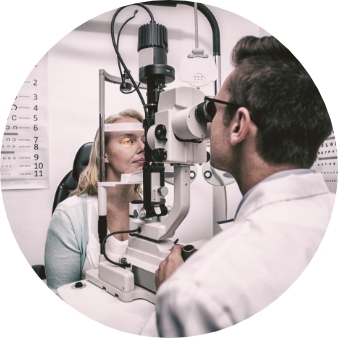 (212) 861-9797
Book an Appointment
(212) 861-9797
Book an Appointment
 (212) 861-9797
Book an Appointment
(212) 861-9797
Book an Appointment
Of Combined Eye Surgery Experience
Eye Procedures Completed
Lectures Nationally & Internationally
From the moment you enter the office you are treated with respect from all the staff. The office operates efficiently to ensure that all patients have the time to be seen and talk with their physicians. I am very pleased with the care. Compassion and overall kindness that has been shown to me.
I have been seeing Dr. Engelbert for several years. He is smart, compassionate, and skilled. He has maintained the quality of my vision, and I consider myself extremely lucky to have been referred to him for my care.I recommend him without reservation.
The service level is excellent. Professional and courteous. Dr. Cooney is one of the most knowledgeable and friendliest doctors I ever had. I wish all doctors could follow his example. He is a great listener and pays close attention to detail. I recommend him highly.
Our internationally-renowned ophthalmologists and Macular Degeneration specialists have trained and taught at some of the finest and most respected academic institutions in the world. As leading eye doctors and the best-rated Macular Degeneration specialists, they have devoted their time and resources to research and the development of new diagnostic and therapeutic strategies. This exceptional and unique expertise, joined with their attentive, empathetic concern and careful approach means that even expert ophthalmologists turn to VRMNY doctors first when they or their families need care.












AMD is a problem with the central part of the retina, the macula. This specialized are is necessary for clearly seeing details of objects in front of you, such as facial features or small print.
AMD is the most common cause of vision loss in people over 50. It is estimated that more than 8 million people in the US have some form of this eye disease.
Many people with AMD experience minimal vision loss during the early stages of the disease. For most people, macular degeneration does not become vision-impairing.
An ophthalmologist examining a patient at this stage may see drusen, small yellow spots under the retina. although no symptoms may be present or develop later. If the doctor only sees drusen, the patient will be monitored. In most cases, the disease will not progress to vision loss. Many patients over 60 have some drusen. Depending on the quantity and size of drusen, specific eye vitamins (AREDS 2 supplements) may be recommended.
Macular degeneration may progress into dry (atrophic) macular degeneration or wet (exudative) macular degeneration.
Dry macular degeneration generally progresses slowly. Drusen may grow in number and size in the retina. Atrophic areas, where the retinal pigment epithelium and overlying retina degenerate may develop.
Visual changes often correlate with the loss of function of the corresponding areas of the retina. Sometimes large regions of cells are lost. This is known as geographic atrophy. Geographic atrophy may cause a blind spot or scotoma in the central vision.
If you have dry macular degeneration, you should tell your ophthalmologist about any changes in your vision immediately. Regular exams along with self-monitoring using the Amsler grid or other devices are necessary for preserving your vision. Patients with dry macular degeneration can develop wet macular degeneration, for which effective treatment is available if started in time.
Preventing dry macular degeneration or halting its progression are areas of intense research and VRMNY is actively participating in some of the promising trials dedicated to this endavour.
People with large drusen, many drusen that run together, or focal pigmentation are more likely to develop wet macular degeneration.
With this form of the disease, new abnormal blood vessels grow under the retinal pigment epithelium, under the retina or even within the retina. New blood vessels often leak blood or fluid under or into the retina. As this happens, objects in that part of the vision field may appear distorted, wavy, or blurry. The new blood vessels may break through some of the retinal layers. And if parts of the retina become damaged by these blood vessels, you may have blind spots.
Regular testing with an Amsler grid can be helpful in detecting problems earlier. If detected early, new blood vessels can be treated before they cause too much damage.
Ultimately, untreated neovascularization and leakage can cause the overlying photoreceptors to die and macular scarring. The final stage of macular degeneration is scarring, which in most cases leads to vision loss.
Macular degeneration only affects central vision, and although it is the leading cause of legal blindness, it rarely causes total blindness. In other words, even patients with very advanced stages of the disease are able to navigate their homes and neighborhoods and will not have to depend on guide dogs or other aids that are commonly associated with total blindness.

These injections need to be carried out with a certain regularity to improve and then maintain visual acuity. Often times, three initial monthly injections will be performed, followed by more stretched out intervals between injections. Injections are generally very well tolerated. Most frequent side effects are redness at the site of injection. Vision threatening complications, such as infection inside the eye (endophthalmitis) are very rare.
Lucentis was approved by the FDA for the treatment of wet AMD in 2006. On average, 21 letters on a specialized reading chart (ETDRS chart) were gained, and about 40 percent of patients regained the ability to read newspaper print (20/40). Not all patients did improve their vision, but 90 percent resulted better or stable vision.
Eylea was approved by the FDA in 2011. Visual results comparing Lucentis and Eylea appear to be equivalent. For some patients, one drug may work better than the other, so VRMNY physicians will sometimes switch between the two to provide you with the best possible outcome to treat wet macular degeneration.
Beovu was approved by the FDA in 2019 and appears to be somewhat more potent in terms of its ability to dry up wet macular degeneration. It also appears to last longer than Lucentis or Eylea. However, Beovu can cause significant inflammation in the eye, and some patients have lost their vision after treatment with Beovu.
Vabysmo was approved by the FDA in 2022. When compared with Eylea, it appeared to last longer, while providing the same vision gains. Side effects appear to be similar to Lucentis and Eylea.
Avastin is not approved by the FDA for AMD, but produces similar results as Lucentis, as recently demonstrated in a large study sponsored by the National Eye Institute. Lucentis and Eylea are about $2000, while Avastin is only about $50. Insurance carriers may often require a trial with Avastin before approving any of the FDA-approved drugs.
Photodynamic, or “cold laser” therapy has been used to treat some cases of wet macular degeneration since 2000. With this treatment, leaking blood vessels in the retina are destroyed using a laser and a light sensitive drug that is administered into a vein in the arm. This is rarely used nowadays, but can be a helpful supplement to anti-VEGF therapy.
Another type of treatment for wet macular degeneration utilizes a thermal laser to clot the areas of choroidal neovascularization and prevent spreading. This is rarely employed nowadays.